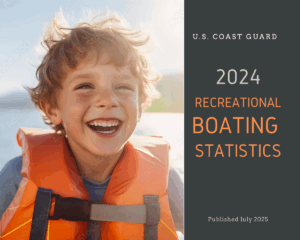By Jeff Moag
Content Director, Water Sports Foundation
Paddling is one of the fastest growing segments of the recreational and outdoor market. With easy access to water throughout the country and a plethora of affordable kayaks, paddleboards and canoes on the market, most anyone can set off on a wonderful adventure and enjoy the benefits of life on the water and the great outdoors.
However, U.S. Coast Guard statistics reveal that one third of all boating-related accidents occur within this paddlesport segment. To keep paddlers safe on the water, the Water Sports Foundation recommends these eight tips for success.

#1 Take a Paddling Class
- What You’ll Learn: A good paddling course will teach you both safety and style. You’ll learn and practice the skills that make paddling safe and enjoyable, and you’ll learn good paddling technique from skilled instructors.
- Who You’ll Meet: A paddling course is the best place to meet fellow paddlers. Your class mates are likely to be safety-minded and have similar skills and interests. A good instructor can become a mentor who will help you become a better paddler.

- Why It’s Fun: You’ll be on the water, learning new skills in a safe and friendly environment.
- Where to Find a Class: Check with your local paddle shop for a list of paddle classes in your area. You can find a list of ACA-certified instructors at americancanoe.org/instruction
#2 Carry The Paddling Essentials

- Safety: Keep signaling devices (whistle, mirror, flares) in a pocket of your life jacket. Sit-inside kayakers should carry a paddle float and pump.

- Comfort: Carry extra layers of clothing in a waterproof “dry bag.” For longer outings, bring energy bars or a lunch. Always bring drinking water.
- Communications: A handheld VHF radio allows you to communicate with the Coast Guard and commercial boat traffic. Use Channel 16 for emergencies. A Personal Locator Beacon (PLB) will relay your precise location to rescue agencies if you’re in distress. Carry a cell phone in a waterproof case, and always be sure to tell a friend before you go.
#3 Always Wear Your Life Jacket

- Wear it Like a Pro: The first sign of a rookie paddler is someone who isn’t wearing a life jacket. Experienced paddlers wear life jackets whenever they’re on the water.
- Make it Fit: Adjust your life jacket so that it’s snug and comfortable. It should not lift up when pulled by the shoulders. Modern life jackets come in all sizes, with models for children, women and men.
- Don’t Tempt the Odds: 85 percent of fatal canoeing accidents and 48 percent of kayaking fatalities involve people who were not wearing a life jacket. Don’t be a statistic. Wear your life jacket.
#4 Know Your Limits
- Be Honest With Yourself: Good paddlers know their limits. If you don’t feel comfortable in a given set of conditions, return to shore.
- Use the Right Boat for the Conditions: Most kayaks, canoes and SUPs are designed for use on protected waters and moderate currents. Specialized boats are used for whitewater, surf and exposed lakes or ocean. Know the capabilities of your craft. These venues require additional training.
- Explore Your Limits Safely: Improving your skills is one of the joys of paddling. Practice in safe conditions with instructors or expert paddlers to expand your personal performance envelope.
- Avoid Impairment: Do not go paddling if you should not be driving. Drinks and drugs are even more hazardous on the water. Coast Guard and state BUI laws apply to all vessels, which includes recreational canoes, kayaks and SUPs.

#5 Plan For Changing Weather Conditions
- Treat the Forecast as the Best Case: When the forecast calls for ideal paddling weather, it will probably be a beautiful day—just don’t count on it. Don’t forget to check tides or river levels and note the time the sun will rise and set.
- Prepare for the Worst Case: Be aware of how changing weather affects paddling, and plan accordingly.For canoeists and kayakers, air temperature is less important than wind speed and direction. And while rain can be a nuisance, lightening is dangerous. Have an exit strategy at all times. If a fast-moving thunderstorm appears, where is the nearest safe landing?
- Pay Attention: Scan the horizon for dark clouds, and be aware of changing temperatures and wind directions, which often precede a squall or thunderstorm. Don’t wait for bad weather. If you sense a change for the worse, get off the water right away.

#6 Tell a Friend
- Share Your Plan: Telling a trusted friend where and when you plan to paddle ensures that someone will know where to send help if you get into trouble.
- Make it Routine: Keep a basic float plan on your computer or phone and make a habit of filling it out and sending it to a friend every time you paddle.
- Include the Four Ws:
- Who: Your name and the name of everyone paddling with you.
- Where: Your planned put-in, takeout and paddling route.
- When: Your estimated launch and return time—and when to notify authorities if you don’t check in as scheduled.
- What to Do: A plan for what to do if you don’t return or check in as scheduled.
#7 Dress for Immersion

- Cold Kills: The human body loses heat about 25 times faster when immersed in cold water than it does when dry.
- Modern Miracles: Today’s paddling gear uses high-tech fabrics and technology to keep you dry, comfortable and looking your best. Avoid cotton clothing like t-shirts and jeans, because they retain water and accelerate cooling when wet. A wetsuit or drysuit allows you to stay warmer when immersed in cold water. Ask your local paddling shop to recommend clothing for the conditions you plan to paddle in.
- Dress Your Children Well: Children lose body heat faster than adults, so make sure they’re dressed to stay warm and comfortable—and with a properly fitted life jacket.
#8 Make Yourself Seen
- Dress For Visibility: Choose a brightly colored life jacket and paddling clothing that will make it easier for others to see you on the water. Carry a light, especially if there’s a chance you’ll be on the water early or late in the day. High visibility strobes and running lights are available at your local paddling shop.
- Know the Rules of the Road: Learn the ‘Rules of the Road’ that govern all boat traffic, from kayaks to container ships. Knowing these simple rules will help you anticipate where other boats will go, and allow you to stay out of trouble.
- Practice Defensive Paddling: Never assume that power boaters can see you. Avoid high-traffic areas whenever possible, and proceed with caution when you can’t avoid them. Be aware of factors like fog and glare that make you more difficult to spot. If you’re between a powerboat and the sun when it’s low on the horizon, the operator almost certainly won’t see you.

ADDITIONAL MEDIA SUPPORT
The communications team at the Water Sports Foundation has designed the National Boating Safety Media Center to provide relevant and accurate content, imagery, experts and resources to assist journalists in story development. If further assistance is needed, please feel free to Contact Us for additional support. https://www.watersportsfoundation.com/about/contact-us/














One thought on “A Beginner’s Guide to Safer Paddling: 8 Tips for Success”
Comments are closed.